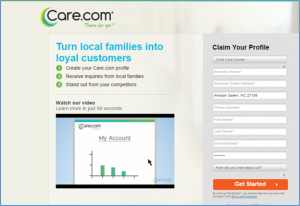
When it comes to business partnerships, there are several advantages. These might include complementary skill sets, dividing responsibilities, tax benefits, and reducing startup costs and risks. Unfortunately, partnerships have some disadvantages as well. Statistics show that up to 70% of businesses fail due to partnerships. After all, drawbacks to a business partnership are;
- Conflicting values and personalities
- Unequal commitment and workload
- Mixing personal relationships with business
- Failure of trust
- Lack of business or declining
But, just like any other relationship, money matters can also impact the relationship you have with your business partner. And, this is most true if they’re a super spender. Thankfully, there are ways to potentially salvage the relationship — or at least protect you or the business financially.
1. Don’t assume.
Perhaps you’ve spotted some concerning warning signs about your business partner and lack of financial responsibility. For instance, they make impulsive purchases, rely too much on credit, or constantly have to borrow money. While these actions shouldn’t be swept under the rug, you shouldn’t jump to conclusions. After all, as Henry Winkler put it best, “Assumptions are the termites of relationships.”
To avoid any potential conflict, set up a time to have a conversation with your partner. Don’t point fingers and avoid judgment. Instead, voice your concerns and listen to where they’re coming from with empathy.
2. Have an active listening session.
“This is a common dispute-resolution tactic in which each person agrees to sit and listen to the other’s position and opinion, without speaking or reacting, for a set period of time — usually around 3 to 5 minutes,” states Main Street business evangelist, author, and marketing veteran Ty Kiisel. “It’s a remarkably useful tool for cooling tempers and giving each side new insight into the other’s position.”
When dealing with a business partnership, who wins matters less than how the partners feel once the dispute is settled. If one side feels marginalized and resentful, he adds that that can eventually poison the partnership and the business.
“Practicing active listening and other exercises like it can ease any ongoing tensions and make each side feel heard.”
3. Make the problem real.
There is a possibility that your partner isn’t aware of how their financial habits are impacting the business. To discuss the issue clearly, you need to use specific terms rather than vague ones.
To drive the point home, you may want to prepare a spreadsheet or chart to demonstrate how their spending affects your long-term goals, such as broadening product/service offerings or expanding into new markets. But, again, it will be easier to convince them to change their behavior if you frame their overspending as a problem that affects the future of your business.
For instance, let’s say that they only want to buy new office equipment. First, you need to make sure that you actually need the equipment. SEcondly, suggest buying used. For example, if the business needs a printer, you could snag a used Xerox Workcentre 7346 Multifunction Color Copier for about $ 5,500 compared to dishing out $ 16,000 for a new 7345.
4. Financially collaborate.
Instead of playing on opposite teams, why not get on the same side? Then, for example, you both could get on the same page regarding the business’s goals. For example, maybe you both want the company to expand into new markets or relocate into a bigger space. However, the only way for either to become a reality is if you’re mindful of your spending.
If you establish shared goals and figure out what must be done to achieve them, you may need to cut your spending. However, if you both agree it is essential to achieve a goal, your partner would be more likely to support your sacrifices, as well as get on board with making sacrifices of their own.
From there, you and your partner can create a budget to ensure you stay on track to reach your financial goals. To avoid overspending, you should create a detailed budget with a breakdown of your various expenditures. If you set spending limits for nonessential business expenses, you’ll be able to avoid overspending.
5. Agree to limits.
Similarly, you can decide how much you want to spend on nonessentials with your partner. Although you may not like how they spend money, the bills must be paid. If your partner doesn’t compromise those, accepting their spending habits may be the right decision to avoid a serious confrontation.
As an example, you might not be on board with a service like SnackNation. However, if you have the funds, eating healthy snacks can increase productivity. And, this is much easier on your wallet, waistline, than visiting the vending machine or ordering out for lunch.
6. Take control of the finances.
In a lot of ways, entering a business relationship is like being in a romantic relationship. As such, you may want to borrow this tactic from couples.
“Trying to break a habit of any kind is bound to take time, which is why it may be wise for you to take over any bill paying while your partner tries to work through their financially irresponsible habits,” writes Kayla Sloan for Everything Finance. “By doing so, you’ll always make sure the bills get paid so that you don’t get behind.”
“That being said, however, try to keep your partner in the loop as to when bills get paid and what they need to pay, if you each pay an amount,” she adds. “It’s still important to work as a team, but until your partner becomes more responsible with their finances, it’s imperative that the more responsible party take over for a little while.”
Since this is a business, though, you should have this conversation with your partner and a third party like your attorney or financial advisor.
7. Set up regular check-ins.
Maintain regular checks on how the budget is developing so that both partners stay on course. For example, establish a meeting time for comparing actual spending to the budget on a weekly or monthly basis. These routine check-ins can hopefully help curb the overspending habits of your business partner.
8. Protect yourself.
Ideally, before starting a business with someone else, you should know quite a bit about them, such as their spending habits. This way, you might want to second-guess whether you should or shouldn’t enter a business venture with them.
Regardless of how well you know your business partner, you should always protect yourself, and the company you’ve built by;
- Put everything in writing. “No matter who your business partner is, even if it’s your brother or your childhood best friend, a written partnership agreement is a necessity,” advises the attorneys at Gaslowitz Frankel. “Should a dispute arise in the future, it’s important to have clearly defined each partner’s role, capital contributions, and ownership interests.” The agreement should also tell how essential decisions will be made, how disputes will be resolved, and what happens in the case of a death, illness, or resignation by a member.
- Build a financial safety net. “To protect your financial interests, make sure your written agreement limits the amount of debt that can be tied to the partnership without your consent,” they add. In addition, ensure the company is adequately protected against potential loss by purchasing an insurance policy. Finally, as well as keeping adequate capital on hand to cover any liabilities, you and your partner should also ensure that the company has enough capital to grow.
- Choose your structure carefully. Consult with a tax and legal professional when determining the best business structure for you and your partner. At a minimum, you can hire an attorney to review the partnership agreement before it is signed if you need assistance drafting your partnership agreement. Additionally, an attorney can ensure that the business executes any crucial documents as it is being set up.
9. Seek outside help.
Your relationship could be improving if you and your partner consult a financial advisor who understands the goals and problems regarding your business. For example, with the help of an advisor, you can create a budget and create a plan to pay off any debts that need to be addressed. As an added benefit, a financial advisor can act as a mediator between your partner and you to avoid miscommunication or resentment.
Overall, a financial advisor can be a valuable member of your team to help you and your partner achieve a sound financial foundation for your business relationship.
10. Dissolve the partnership.
Finally, you may opt to end the relationship if your partner refuses to acknowledge that they’re a super spender. After all, it’s unlikely they will ever change if they’re in denial. Or, even worse, don’t care about how their overspending is impacting you and the business. So, you can either accept what you have to, or you can walk away.
“Whether your partnership is a general partnership, a limited partnership, or a limited liability partnership (LLP), and whatever your reasons for dissolving the partnership, there are several things you will need to do to ensure the dissolution of the partnership is done properly,” explains Belle Wong, J.D. for LegalZoom. “It’s important that you correctly and completely dissolve your partnership to ensure you have ended your liability under the partnership arrangement.”
How to dissolve a partnership.
- Review your partnership agreement. A written contract isn’t always required, but most partners prefer to have one anyway to protect their interests. If there is no partnership agreement, you need to notify your partner.
- Discuss with other partners. To avoid any misunderstandings, it’s crucial that you remain on the same page with your partners — if you have them. Those discussions should include debt and other obligations that relate to the partnership. Organizing a meeting to discuss your dissolution plan will help to ensure that a satisfactory outcome is achieved.
- File dissolution papers. In addition to filing a dissolution of the partnership with the state, it’s a good idea to notify the state of your partnership ending in a formal manner. If there are any errors regarding future debts or obligations, you can resolve them through this process.
- Notify clients, customers, and suppliers. “While your state laws might require you to publish a notice of your partnership dissolution in a local paper, it’s important that you also directly notify all the people and businesses with whom you’ve dealt with as a partnership,” states Wong. “By giving this notification to your clients, customers, and suppliers, you’re informing them that the partnership no longer exists, and you along with your partners will no longer be responsible for each other’s debts and obligations under the partnership.”
- Tie up any loose ends. Verify that all creditor notices have been received and that your debts have been settled or canceled. Finally, you must distribute all your assets in accordance with partnership agreements (or with whatever you have agreed upon with your partners) and close business bank accounts, contracts, leases, permits, or registrations.
Business & Finance Articles on Business 2 Community
(21)
Report Post





